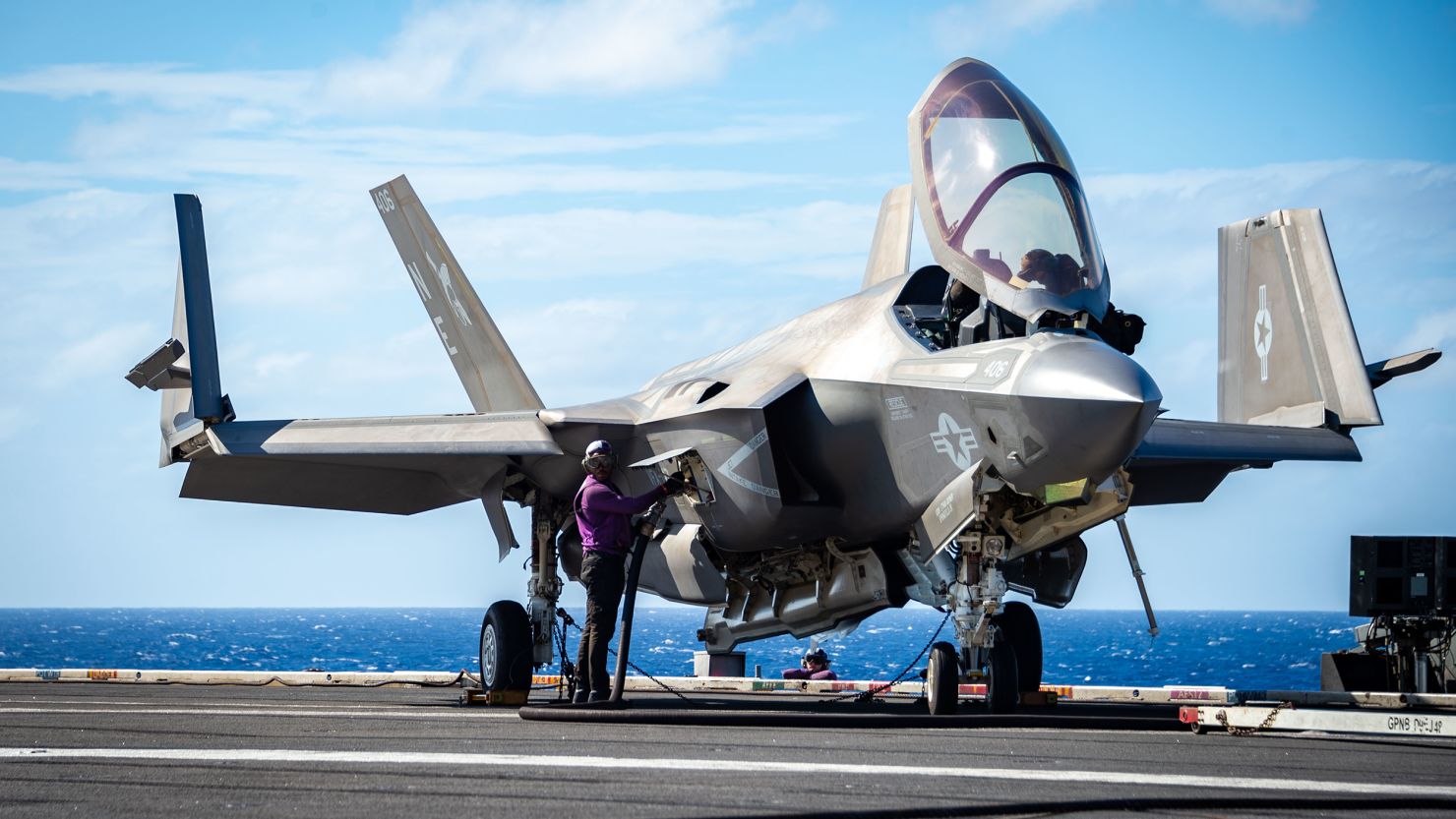In a surprising turn of events, the Pentagon has temporarily halted deliveries of the F-35 Lightning II fighter jet, the crown jewel of American military aviation, after discovering that a critical component of the aircraft was manufactured in China. This revelation has sparked concerns over national security, supply chain vulnerabilities, and the implications for one of the most expensive defense programs in U.S. history.
The Discovery: A Supply Chain Surprise
The issue came to light during a routine audit of the F-35 program, where it was discovered that a key component in the jet’s engine—a magnet used in the integrated power package—was sourced from China. The magnet, while not an advanced technology on its own, plays a vital role in the aircraft’s functioning. This discovery is particularly alarming given the stringent regulations surrounding the procurement of materials for military hardware, which are intended to prevent foreign, particularly adversarial, influence.
The F-35 program, which involves multiple defense contractors, has long been praised for its cutting-edge technology, stealth capabilities, and multi-role functionality. However, this incident highlights a critical oversight in the complex global supply chain that supports the production of these advanced aircraft.
National Security Concerns
The Pentagon’s decision to halt F-35 deliveries underscores the gravity of the situation. The inclusion of a Chinese-made component in a U.S. military aircraft raises significant national security concerns. The F-35 is not just any aircraft; it is a cornerstone of the U.S. military’s air superiority strategy and is used by several allied nations as well. The thought that any part of this sophisticated weapon could have ties to China, a country often viewed as a strategic rival, has set off alarms in Washington.
Officials are particularly worried about the potential for espionage or sabotage. Even though the magnet in question is not connected to sensitive systems within the F-35, the presence of any Chinese-manufactured parts in such a critical defense asset is troubling. The incident has prompted an immediate review of the F-35’s supply chain, with calls for stricter controls and more rigorous oversight to prevent similar issues in the future.
A Blow to the F-35 Program
The F-35 program has already faced its share of challenges, including cost overruns, delays, and technical problems. This latest setback is likely to fuel criticism of the program, which has been a target for those who argue that it is too expensive and plagued by inefficiencies. The cost of the F-35 program is projected to exceed $1.7 trillion over its lifetime, making it the most expensive weapons system ever developed.
The halt in deliveries could also have significant implications for U.S. allies, many of whom are relying on the F-35 to modernize their own air forces. Delays in the delivery schedule could strain international relations and undermine the operational readiness of allied forces.

The Broader Implications
This incident is a stark reminder of the vulnerabilities in the global supply chain for critical defense technologies. The F-35 program, like many others, relies on a vast network of suppliers from around the world. While this globalized approach can reduce costs and speed up production, it also increases the risk of components from adversarial nations finding their way into sensitive military equipment.
The discovery of the Chinese-made magnet has sparked a broader debate about the U.S. defense industrial base. Some experts are calling for a reassessment of how and where military components are sourced, with a push for more domestic production to ensure that critical defense systems are free from foreign influence. This could lead to policy changes that prioritize supply chain security over cost savings, potentially driving up the cost of future defense programs but reducing the risk of foreign interference.

What’s Next?
The Pentagon is now working closely with Lockheed Martin, the primary contractor for the F-35, to resolve the issue. The Department of Defense has emphasized that the halt in deliveries is a precautionary measure, and there is no immediate threat to the aircraft currently in service. However, the situation has added another layer of complexity to an already challenging program.
In the meantime, the Pentagon’s decision to pause F-35 deliveries sends a clear message: national security cannot be compromised, even in the face of globalized production pressures. As the investigation continues, the future of the F-35 program—and how it adapts to these new challenges—will be closely watched by both military experts and international allies.
This incident serves as a wake-up call for the U.S. defense establishment, highlighting the need for greater vigilance in protecting the integrity of the military’s most advanced systems. As the Pentagon grapples with this latest challenge, the implications for the future of defense procurement and supply chain management are likely to be far-reaching.





